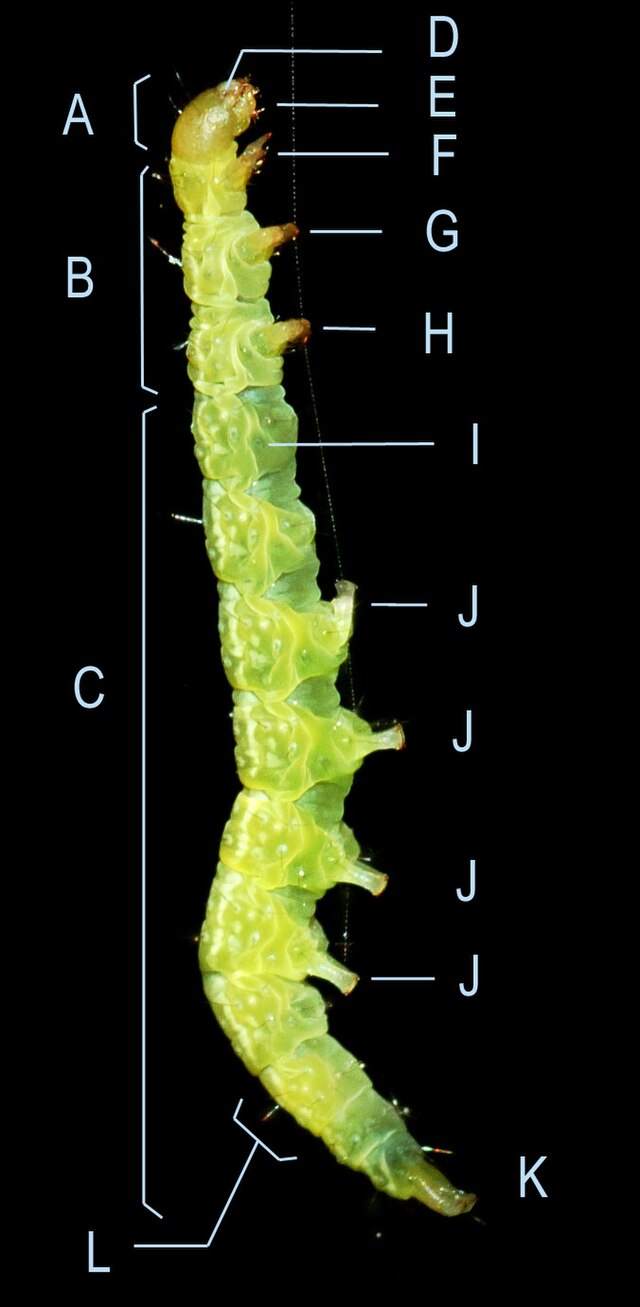Top Qs
Timeline
Chat
Perspective
Proleg
Anatomical structure From Wikipedia, the free encyclopedia
Remove ads
A proleg is a small, fleshy, stub structure found on the ventral surface of the abdomen of most larval forms of insects of the order Lepidoptera, though they can also be found on larvae of insects such as sawflies. In all the orders in which they appear, mainly Hymenoptera and Lepidoptera, prolegs of any form evolved independently of each other by convergent evolution.[1] They appear to have evolved from ancient inactive genes that have since been activated again.[2]

K: anal proleg
(F, G, and H: true legs)


Prolegs of lepidopteran larvae have a small circle of gripping hooks, called "crochets". The arrangement of the crochets can be helpful in identification to family level.[3] Although the point has been debated, prolegs are not widely regarded as true legs, derived from the primitive uniramous limbs. Certainly in their morphology they are not jointed, and so lack the five segments (coxa, trochanter, femur, tibia, tarsus) of thoracic insect legs. Prolegs do have limited musculature, but much of their movement is hydraulically powered.
Remove ads
Number of prolegs for various insect larvae
Additional (stubby) prolegs on segment 8 have been reported on the Geometridae species Campaea perlata and Alsophila pometaria.
Remove ads
See also
References
External links
Wikiwand - on
Seamless Wikipedia browsing. On steroids.
Remove ads
